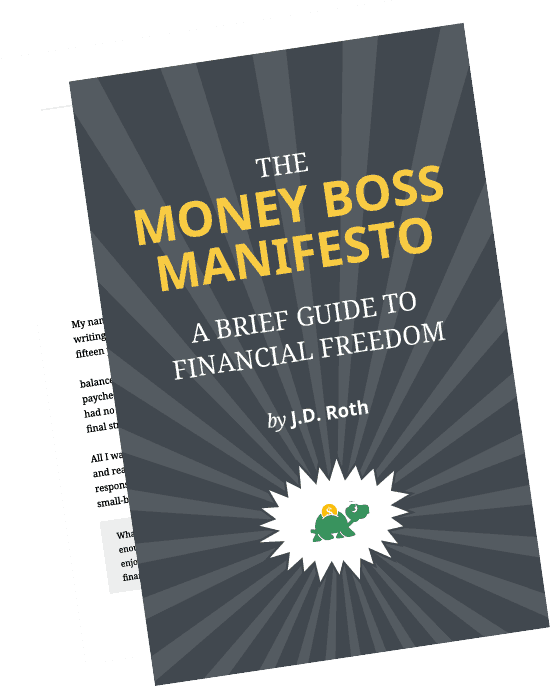The marginal utility of money
I know I’m taking a risk by starting an article by defining a term from economics. But please, stick with me. It’s not a hard concept to understand, and it directly relates to your financial success.
Utility is a term used in economics to describe how much value or happiness one derives from a good or service. Marginal utility refers to how much additional value/happiness is derived from one additional unit of the good or service. Most goods and services are said to have “decreasing marginal utility.”
“Decreasing marginal utility” sounds like gibberish, but it’s actually pretty easy to understand:

- First slice of apple pie: “Yes, please!”
- Second slice of apple pie: “Well…OK…one more piece.”
- Third slice: “Oh, I couldn’t. I’m stuffed.”
Each slice of pie provides less happiness (“utility”) than the previous slice. The same thing holds true with nearly every good or service.
In fact (or perhaps, as a result), this idea holds true for money as well. For many of us, an extra $500,000 in cash could accurately be described as life changing. But what if you already had a liquid net worth of several million dollars? An extra $500k would still be nice, but I doubt it would change your life meaningfully.
Get Rich Slowly has practically been a real-time case study in this concept. J.D. used to be deeply in debt, at which point he had a high marginal utility of wealth. That is, every extra dollar he earned and saved made a big difference to his well-being.
However, as he climbed out of debt, built his income, and built his wealth, his marginal utility of wealth has slowly declined. J.D. recently put it this way:
“Debt used to be my biggest source of money stress. Then it became an obsession with frugality, which led me to cross the line to cheap bastard. Now my biggest problem seems to be an obsession with income: I want more money all the time. I’m beginning to see, however, that if I relax on my drive for a higher income, I can have more of other stuff, like time with friends — and travel.”
Marginal Utility and Risk Aversion
Because most us have a decreasing marginal utility of wealth, a loss of a given amount has a greater impact than a gain of the same amount. For example, would you be willing to accept a wager of $10,000 on a coin flip? If you win, you get $10,000 — but if you lose, you owe me $10,000?
I sure as heck wouldn’t take that bet.
The idea of winning $10,000 is exciting, but the idea of losing $10,000 in an instant is downright sickening. Fifty-fifty odds just aren’t good enough to get most people to put a meaningful amount of money at risk.
In economic jargon, we say that we’re “risk averse”. That is, we’re unwilling to take a risk unless the probability is good that we’ll come out ahead as a result of taking that risk.
Eliminating Risk Where Possible
If you’re like most people, you’re more afraid of running out of money than you are excited about being filthy rich. And if that’s the case, why not eliminate as much risk in your investment portfolio as you possibly can?
For example, have you checked to see if you’re saving enough each year to meet your goals by investing entirely in TIPS? (TIPS — Treasury Inflation-Protected Securities — are bonds that provide protection against inflation.) If so, why take on stock market risk? With TIPS, you know exactly what inflation-adjusted return you’ll be getting. It’s hard to have less risk than that!
Or, if the modest return from TIPS isn’t going to be enough to meet your goals — and you therefore need the higher expected return that comes with stocks — why not try to make the stock portion of your portfolio as safe as possible? For example, if you’re saving enough each year to get the job done with index funds, why take on the additional risk that comes with picking individual stocks?
Alternatively, if you’re in (or near) retirement and you’re worried that you’re going to outlast your portfolio, why not minimize that risk by purchasing an annuity that can provide predictable income for the rest of your life?
When it comes to investing, rather than asking how much risk you can stomach, try asking how little risk you can get away with. After all, is it worth jeopardizing your goals for a shot at that third slice of pie?
Become A Money Boss And Join 15,000 Others
Subscribe to the GRS Insider (FREE) and we’ll give you a copy of the Money Boss Manifesto (also FREE)
